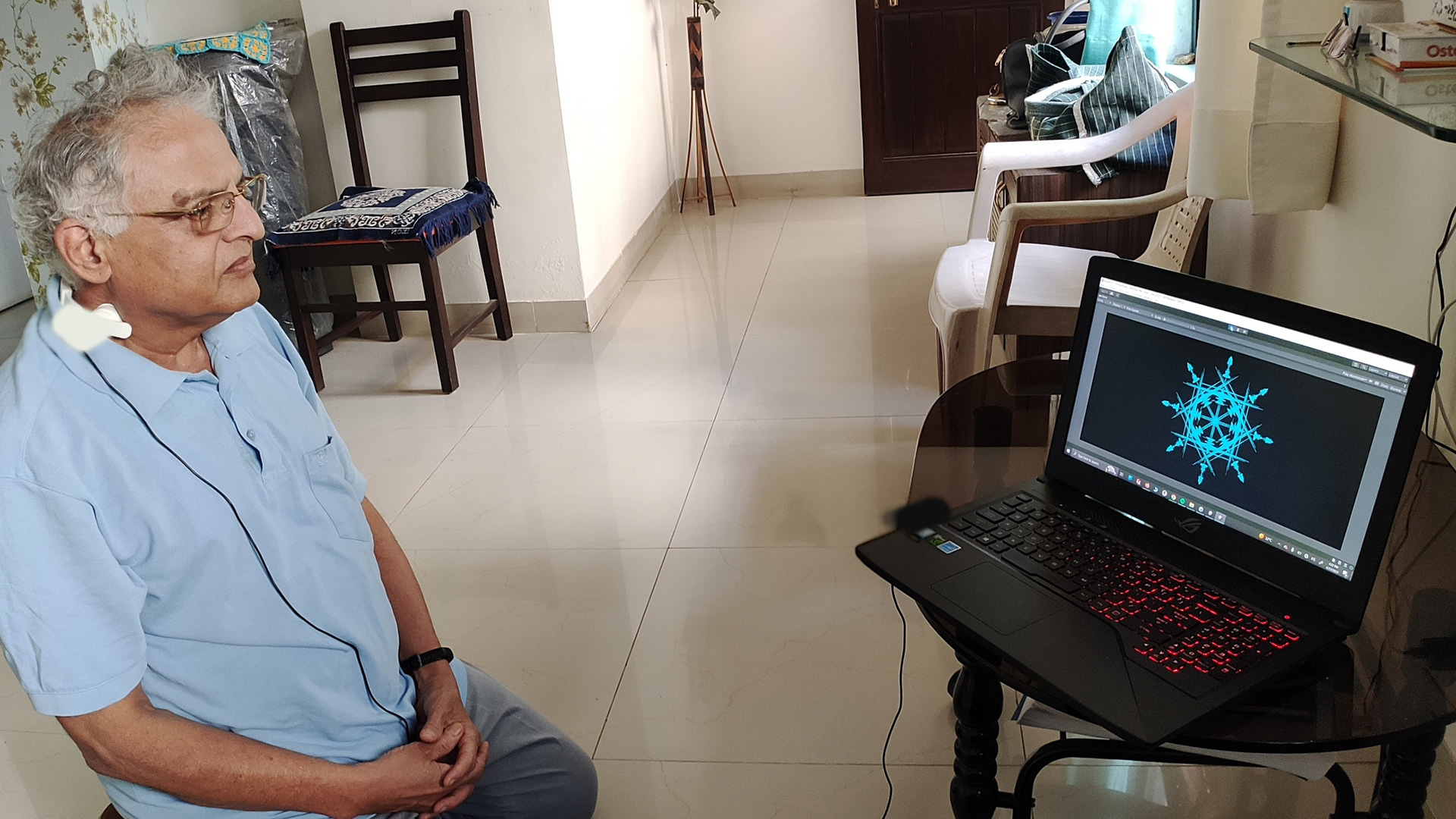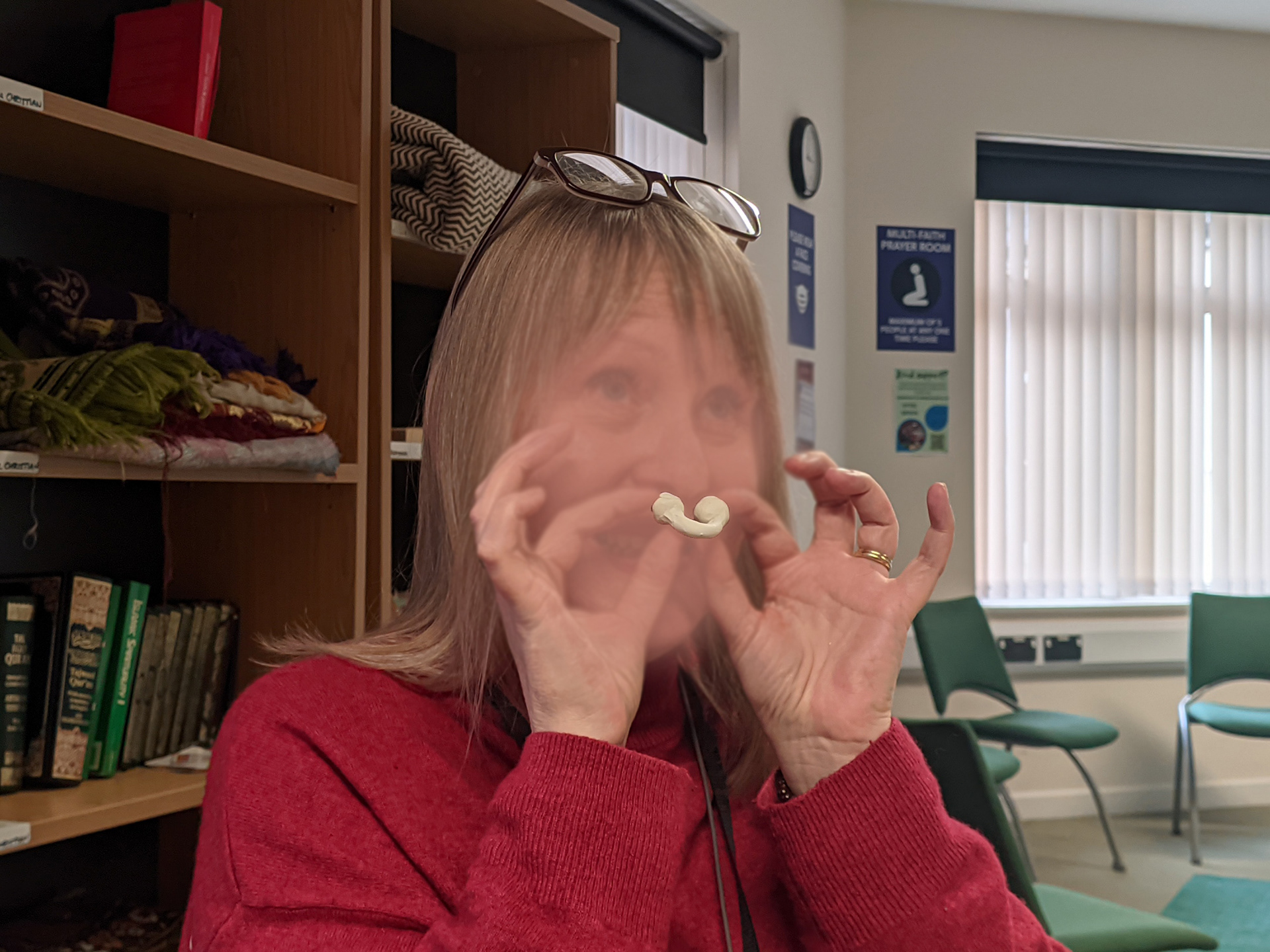This project was undertaken during a one-year period as part of my Master's program, MSc Integrated Design Innovation. The thesis titled "Gamifying Breath to Incentivize Engagement with Meditation." studies and explores various methods to engage with mediation and to incentivize the activity for the user to meditate regularly.
Breathing serves as a profound bridge connecting our body and mind. This life force regulates our energy, emotions, and stress. When we feel stressed, our breathing rate and pattern changes as part of the ‘fight-or flight response’. Scientific studies have shown that controlling your breath can help to manage stress. Among the various meditation practices, mindful breathing stands as a simple, yet immensely powerful technique. The benefits of meditation can be seen only in the long term. Though it may provide a temporary relief, instant gratification is not possible which may lead to not continuing the activity regularly.
To collect accurate and continuous respiratory data from a primary source with a device being non intrusive, FitBreathe was created for this project. FitBreathe is a smart wearable breath tracking neckband which can tracks the user's breath parameters like inhale, exhale, breath held and the intensity of each breath during the meditation session.
“Gamification” is the use of game elements in non-gaming systems to improve user experience and user engagement, loyalty and fun. Gamification attempts to harness the motivational power of games in order to promote participation, persistence and achievements. Motivation is demonstrated by an individual’s choice to engage in an activity and the intensity of effort or persistence in that activity. Current approaches concern two dominant clusters that play a role in determining player’s motivation: extrinsic and intrinsic motivation. Gamification combines these two motivations; on one hand using extrinsic rewards such as levels, points, badges to improve engagement while striving to raise feelings of achieving mastery, autonomy, sense of belonging. Gamification aims to create a sense of playfulness in non-game environments so that participation becomes enjoyable and desirable. While the goal is to create and maintain intrinsic motivation, gamification is the application of extrinsic motivators. Careful selection and implementation of these motivators will trigger internal motivation and aid in maintaining it.
The term co-creation was used by Sanders and Stappers (2008) to refer to “any act of collective creativity, i.e. creativity that is shared by two or more people”, and used the term co-design to refer to the “collective creativity as it is applied across the whole span of a design process”.
As meditation practices are quite personal, experience prototyping was quite necessary as a part of co-design methodology for the users to contribute, create and direct the project in a direction which other meditators will appreciate. To execute such interactions between designers and users, a co-design workshop was the right method to accomplish the goal.



Some photos of the co-design activity and the outcome mapped out to understand the key words to develop the project.
Further details cannot be shared due to the confidential nature of this project.